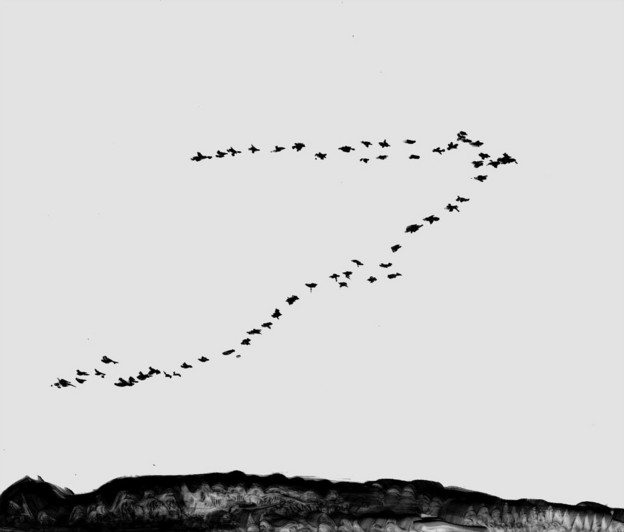Bright arrogance #13
David Hadbawnik and Carrie Kaser's epic redux reduced

David Hadbawnik’s Aeneid (currently a series of hand-sewn and illustrated chap-books numbered 1 & 2; 3 and 4) is a translation-as-reduction, paradoxically allowing for selective amplification through subtle resonances generated in the space of what’s left out. The epic in general is no light reading, although these translucinations make it so without trivializing the content. Like Christopher Logue’s similarly reduced Iliads (but unlike, I would say, Ronald Johnson’s erasure of Paradise Lost or this more transductive work of conceptual needlepoint), the modernist spacing and minimalist gestures of condensation allow the poem to take advantage of an aeon of intertextuality, without getting the Laocoön end of it.
These translations are not only full of light, but also speed. I was pleased and surprised, for example, that Hadbawnik dispensed with the invocation to the Muse, a too-often fetishized, and ultimately cloying ornament. Indeed, as even a whitewig like Dryden noticed, translations of the Aeneid can quickly become overpowering if too pompous, sentimental or lofty. Virgil is, for him, “like ambergris, a rich perfume, but of so close and glutinous a body, that it must be opened with inferior scents of musk or civet, or the sweetness will not be drawn out into another language.” Hadbawnik’s Aeneid is not the creative destruction of erasure, but rather the well-crafted impoverishment of something potentially too rich to take in.
Accordingly, the illustrations of Carrie Kaser that accompany the translation are understated, humble and artisanal—inviting augury but not spelling out what the text is already doing. These images may, in fact, deculturize Virgil. Perhaps these silhouettes of fields and ducks, thistles and stags bring us back to the time of his more youthful Eclogues, before his own exile and the expropriation of his land. After all, there is an autobiographical element, many times forgotten, underpinning the poet’s glorification of Aeneas’s rough adventure out of burning Troy. Here, the epic is stripped of teleological gloria and reduced to the existential uncertainty of someone who has not yet found his Italy—the work, after all, of the poet or hacker rather than the hero. Doggedly improvizing, grasping, endlessly thwarted, this Aeneas is concocted with fragments and patch work that depict moments of lucidity and even zen awareness, escaping the epic and its memorializing function. This is a hand-sewn, not “hewn” book.[1] It’s neither an easy instant product nor a tomb, but rather a book that contains the small intimacy of moments stolen from epic time.
This crafted book may be less about the text than the memory of a text, less about the Aeneid than its insistence and survival. Perhaps also it is about its disappearance from cultural relevance. Because Virgil, like Dante (and Virgil through Dante), is an immense node of translational overdetermination, any further translation becomes a metaphor of translation, allowing us to reflect on the ways the original is entangled in the history, sometimes violent, in which Greek meanings were transfered into Roman, Latin into English, so that what we read in the epic is the longue durée of history that defies the hexameter, full of unreadable, irresolvable lines, which, in Fenollosa’s words “would take all time to pronounce.”[2]
However, we need not be faithful to this interminable play of reference and dudgeon. Turning the tables on time, Hadbawnik even seems to insert sentiment from the Eclogues, placing on these wild wastelands of Getic fields a wishful hysteron proteron that reverses the violence that myth and its endless reproduction in translation both memorializes and propagates:
make the god run for once
from the girl and the fountain
tree or bird
spring into human form
1. However, a standard paperback edition of books 1-6 will be available from Shearsman Books in the fall. The hand-sewn version is currently available through Little Red Leaves Textile Series.
2. See Yopie Prin's "Metrical Translation: Nineteenth-Century Homers and the Hexameter Mania," for a fascinating account of the Victorian hexameter and a riposte to Venuti's notion of the hexameter as domesticating and ultimately conservative, rather than, as Prin claims, a modernizing and defamiliarizing measure.
Bright arrogance